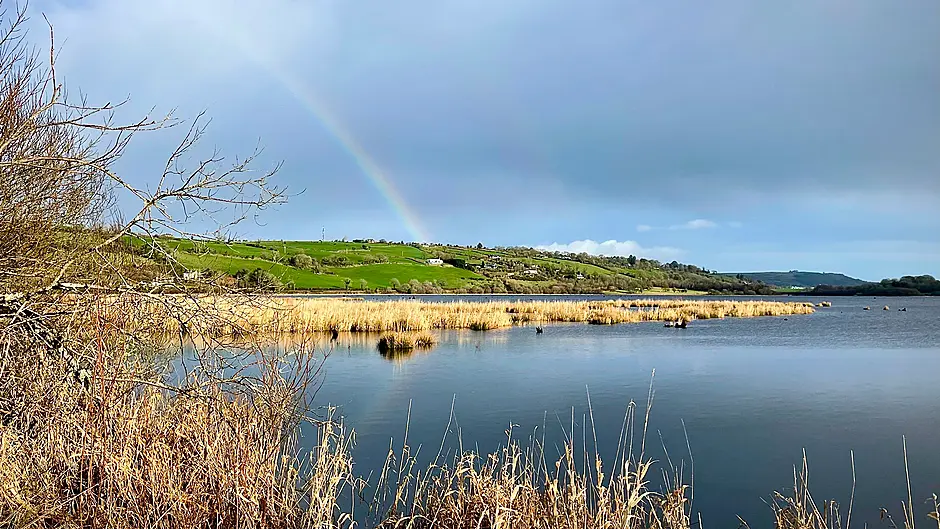WE recently experienced the excitement of trying to spot a bird that had only just been identified in Ireland for the first time, the penduline tit (Remiz pendulinus).
We were a little late to the game because three of these tiny birds, two males and a female, were first spotted at the start of January this year at The Gearagh.
The Gearagh is a submerged glacial woodland near Macroom, flooded in 1954 to build two hydroelectric dams, and is now an important wetland habitat for many species. It has legal conservation protection as a Special Area of Conservation (SAC), a Special Protected Area (SPA) and is a Ramsar site (a wetland designated to be of international importance under the Ramsar Convention).
This wetland habitat is especially attractive to birds and therefore bird-spotters!
On a recent Sunday we caught the bug and loaded the kids, binoculars and telephoto lens into the car and headed off with high hopes of spotting these penduline tits.
Nature-based car games
To keep spirits high on the road trip from Skibbereen, we decided to see how many bird species we could count on the way. We took our inspiration from the West Cork BirdWatch Ireland Bird Race, which is taking place this Sunday January 29th. The race involves teams of four competing by counting how many different bird species they can see or hear between Clonakilty and Rosscarbery over the course of a day. The total tally is usually over 100 bird species. Seeing as we were just looking from our car windows on our road trip, we didn’t feel we did too badly with 22 species. Highlights of our car-drive sightings were two common buzzards, seen separately by my sons, and plenty of fieldfare and redwing in the roadside hedges and fields.
Once we arrived at The Gearagh, we added to our bird sighting list but unfortunately, we did not spot those famous penduline tits.
Penduline tits
Why is there such excitement about these birds? It’s principally their rarity in Ireland. They have never been recorded here before and are mostly found in mainland Europe and parts of Asia, where they are resident in the south and migratory in the north. Their favourite habitat is marshland and in winter they feed on seeds including those of bulrushes, of which there are plenty in The Gearagh. These birds will be closely monitored and seeing as they are here in the winter and spring is approaching, there is a small possibility they may breed. They build beautiful pendulous nests using fibres from rushes, which gives them their name penduline tits, and they hang them over water from reeds or tree branches.
Consolation prize?
Despite not spotting the elusive tits, we were fortunate enough to see a field full of whooper swans.
A sea of bright white swans against the green field, noisily honking, was a sight and sound to behold and certainly made the trip worthwhile.
Whooper swans are winter visitors to Ireland from Iceland and they enjoy feeding on grassland near our inland wetlands.
Other birds that overwinter at The Gearagh include wigeon, teal, mallard, coots and golden plover. If you would like a day out in nature or have an interest in spotting wintering birds, I would highly recommend The Gearagh.
Other rare findings
Only last month twitchers from all over Ireland made a bee-line to Toe Head to see the very rare isabelline wheatear.
Prior to this the only other recorded sighting of this bird was 30 years ago at Mizen Head. Cape Clear (Oileán Chléire) is another hotbed for rare birds because its location provides a resting spot for migrating birds, scarce passage migrants and lost vagrants that have flown off course. Rarities previously seen on Cape include the golden oriole, the Baltimore oriole, Arctic warbler and the blue-winged warbler.
The appearance of the unusual does always create a flurry of excitement and sometimes even important calls-to-action. For example, during January this year sea turtles have been washing up on the western shores of the UK and Ireland. Turtles appearing include a Kemp’s ridley turtle in South Wales and two loggerhead turtles in North Wales and Co Mayo. Current weather is blowing them off course and our cold waters are stunning them, so some end up stranded on our shores. The call to action is to report any live strandings to Dingle Oceanworld Aquarium for rescue and rehabilitation. Initially the turtles may appear dead due to cold shock and torpor, so careful checking is required including touching gently near the eye to check for a blink reflex. If in doubt, ring the aquarium on 066915211. Dead or decayed turtles should still be recorded for monitoring purposes via the National Biodiversity Data Centre.
So, will we go out of our way again in pursuit of rare bird or wildlife sightings? Quite possibly, as even if we might not always get to see what we set out to find, being out in nature is never a disappointment.
• Ann Haigh MVB MSc MRCVS is a Skibbereen resident, a mum-of-two and a veterinarian with a masters in wildlife health and conservation and she is passionate about biodiversity and nature.








